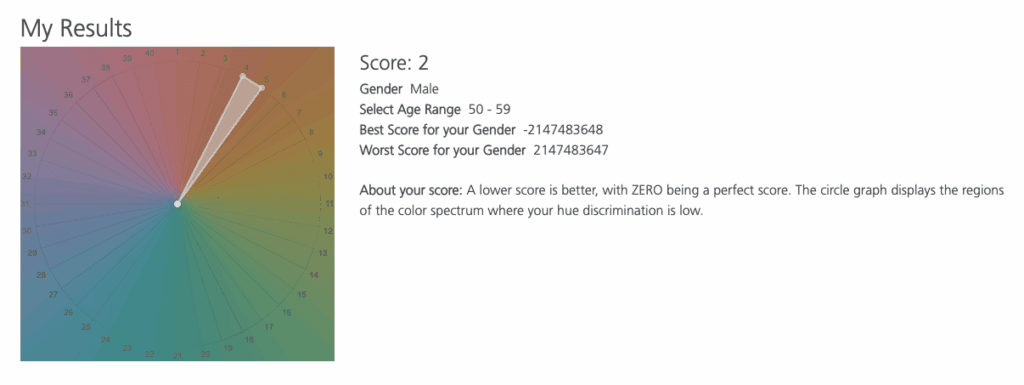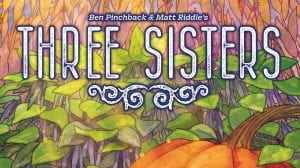It’s not too often that people who have excellent color vision, like myself, get to play a game that allows us to fully extend that sense. “Excellent color vision” you say? Yes; the X-Rite PANTONE color test shows that I get a nearly perfect score—which is pretty great given that I’m old, and have really bad eyesight in general.

But I’m not here to brag about color vision, I’m here to tell you why you should buy, and / or play, Hues and Cues, from The Op Games.

The Colour and the Shape
Originally released in 2020, Hues and Cues quickly became a social media darling thanks to its high player count, simple rules, and casual gameplay.
In Hues and Cues, the goal is to earn the most points over the course of two rounds. Players are dealt a hand of color cards from the deck, each card featuring a color swatch and coordinates, which show its position on the player board. On their turn the clue giver offers a one word clue meant to guide the other players into placing two markers as close as they can to the correct color swatch on the board.
Andy says, “The clue is schoolbus” – his card shows the swatch F5.
In turn order, the players place their pieces:
- Noelle places her first marker on E4
- Evan places his first marker on G4
- Mason places his first marker on F5
- Henry places his first marker on F3
Then the clue giver may offer a second, two-word clue meant to nudge the players closer to the goal. This is particularly helpful if players misinterpret the first clue.
Now in reverse turn order, players place their second marker.
- Henry places his second marker on F6
- Mason places his second marker on E5
- Evan places his second marker on H3
- Noelle places her second marker on G6

Once all the markers have been placed, the clue giver takes the scoring frame and places it into the board, centered on the correct space. Then, players receive points as follows:
- 1 point to a player whose marker immediately adjacent to the outside of the frame, not counting diagonals
- 2 points to a player whose marker is inside the frame
- 3 points to the player who correctly guessed the location
- 1 point to the clue-giver for each marker inside the frame
Using the example above, players receive the following points
- Noelle – 4 points
- Evan – 2 points
- Mason – 5 points
- Henry – 3 points
- Andy – 6 points
After each player has taken two turns, the game ends.
Winning would be easy if your colors were like my dream
I’d heard of Hues and Cues—I mean, how could you be into board games and not—but I’d never had the chance to play it. However, when my daughter came home from her first year of college and told us about it excitedly, I had to request a copy from The Op.
And I’m certainly glad I did; it’s a blast, and has earned its place on our family game shelf. First off, it’s super easy to set up. Put out the board, give everyone two cards, and you’re off to the races. Second, it’s very easy to explain and play: tell the clue-giver, “Pick a color from your card, find it on the board, then give a one-word clue that points people to that location”. And finally, it doesn’t outlast its welcome. Unless you’re playing with a full complement of 10 players (TEN PLAYERS!!), a game shouldn’t take much more than 20-30 minutes.
All those things combine to make a game that’s ideal for my family.
There are some downsides to this game, though. The elephant in the room? A game specifically about color is almost certainly going to be a dealbreaker for anyone with any sort of sight degradation: partial blindness, color-blindness, etc. The second is mostly about component quality. The cards are a bit too thin, and in some cases, players have indicated the color swatch on their card doesn’t match the one on the board. However, I’m guessing that last complaint is one of proper lighting, which is the final issue. Don’t try to play this game in low light or you might not have much fun. Because adjacent colors are so similar to each other, good lighting is critical to this game.

But if you can get around those issues, a game of Hues and Cues plays very similarly to games like Codenames. Being a good clue-giver is really important. However in Hues and Cues you want to be just good enough to pack the frame without letting a player hit the bullseye.
If you enjoy color theory, or party games, or games where you argue over the exact shade of the word “tomato” then Hues and Cues should be on your shelf.












